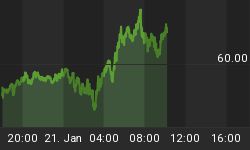 "Watch the costs and the profits will take care of themselves."
"Watch the costs and the profits will take care of themselves."
Andrew Carnegie (1835-1919)
This article is part of a continuing series on asset allocation, which explores the potential benefits of investing a wide variety of asset classes beyond simply stocks and bonds. The multiple asset class approach to investing attempts to minimize the probability of incurring significant and prolonged portfolio losses.
In the world of investing, Mr. Carnegie might have said, "watch the losses and the profits will take care of themselves". As mentioned in a timely article dated December 29, 2006, False Diversification May Prove Costly In 2007, long bull markets often cause us to forget about the benefits of true asset class diversification. To illustrate the concept of false diversification, we studied a hypothetical portfolio made up of 12 different mutual funds and ETFs, which declined by 42.49% during the last bear market in U.S. stocks (2000-2002). Considering the S&P 500 declined by 46.34% in the same period, our hypothetical growth investor did not have a truly diversified portfolio due to positive investment and asset class correlations.
Building A Truly Diversified Portfolio
Understanding Asset Class Correlations
If one of your primary objectives is to produce positive investment returns while having a low probability of incurring losses in a reasonable time frame, you must first understand how different asset classes behave in different economic and financial market environments. Asset class performance during the 2000-2002 bear market is covered in Upgrading Your Asset Allocation For 2007.
Figure 1 shows the performance of the dividend-reinvested S&P 500 index from 1995-2006. When attempting to reduce portfolio volatility, it is helpful to identify asset classes or hedging strategies which performed well during the periods of weakness in U.S. stocks (shown by the blue circles below).
Figure 1
Daily price data for specific investments representing the wide variety of asset classes listed in Figure 2A was collected from January 1, 1995 to December 31, 2006. Based on investment performance in both bull markets for U.S. stocks (1995-2000 & 2002-2006) and bear markets for U.S. stocks (2000-2002), the asset classes were separated according to their appeal in economic expansions (bull markets), economic contractions (bear markets), and special situations.

An asset allocation between the asset classes listed in Figure 2A was developed which was able to produce positive annual returns every year from 1995-2000. In oversimplified terms, the asset allocation was built as shown in Figure 3.
Figure 3
The resulting allocation produced the historical results shown in Figure 4. It should be noted that while this allocation was able to significantly reduce volatility is was not able to eliminate it. You can see by close examination of the blue line in Figure 4 that the allocation does exhibit periods of investment losses as you would expect in any investment program. However, the historical results are much more appealing than those of the S&P 500 index. While we will not publish the specific allocation which produced the historical results in Figure 4, Figure 3 does give you a visual representation of weightings between each asset class or investment.
Figure 4
Investors can use ETFs, such as SPY, IYR, RWR, ICF, RWX, AWF, VDE, XLE, DGT, EEM, VBR, GSG, IEF, TLT, DVY, GLD, and SLV to gain access to a variety of asset classes.
Historical Performance vs. The Real World
Obviously, the next bear market and subsequent bull market in U.S. stocks will be different from the most recent cycles. The strategy we are building was developed with a respect for Mark Twain's way of looking at history: he stated,
"The past does not repeat itself, but it rhymes."
The future will not be exactly the same as the past, but there will be meaningful similarities. This strategy is based primarily on how asset classes, not individual stocks, performed under different economic and market conditions. This should make the results more relevant than if we studied how Microsoft's stock performed under the same conditions since individual stocks can be influenced by company specific outcomes (earnings disappointments, fraud, credit ratings, analyst recommendations, etc).
A common criticism of any study of historical asset class correlations is to point out that none of us know which asset classes will be the winners in the future. While that criticism does hold water, many of the asset class correlations presented here should remain relevant in future economic cycles. For example, the odds are extremely high that bonds will be more desirable in an environment where the Federal Reserve is lowering interest rates (the Federal Funds Rate). Conversely, in the future, the odds are good that bonds will be less attractive under conditions where the Federal Reserve is raising interest rates. The odds are also reasonable that commodities will be more attractive in periods of economic expansion and they will be less attractive in periods of economic contraction.
Is multiple asset class investing the cure for all your investment worries? We all know that no such cure exists. However, research shows that there may be a better way to build a portfolio of investments that offers real diversification and an opportunity for improved returns. In an effort to better prepare for 2007 and beyond, I recently conducted some extensive research on the potential benefits of investing in a wide array of asset classes, including some with low or negative correlations to U.S. stocks. Since the study, Protecting Your Wealth From Inflation And Investment Losses, is rather lengthy, I will continue to summarize what the historical numbers tell us in future articles. While there are several ways to successfully approach the investment markets, I feel we can all gain some advantage from reviewing how different asset classes performed in both bull and bear markets. As time permits, I will continue to expand on these topics in the coming weeks.
















